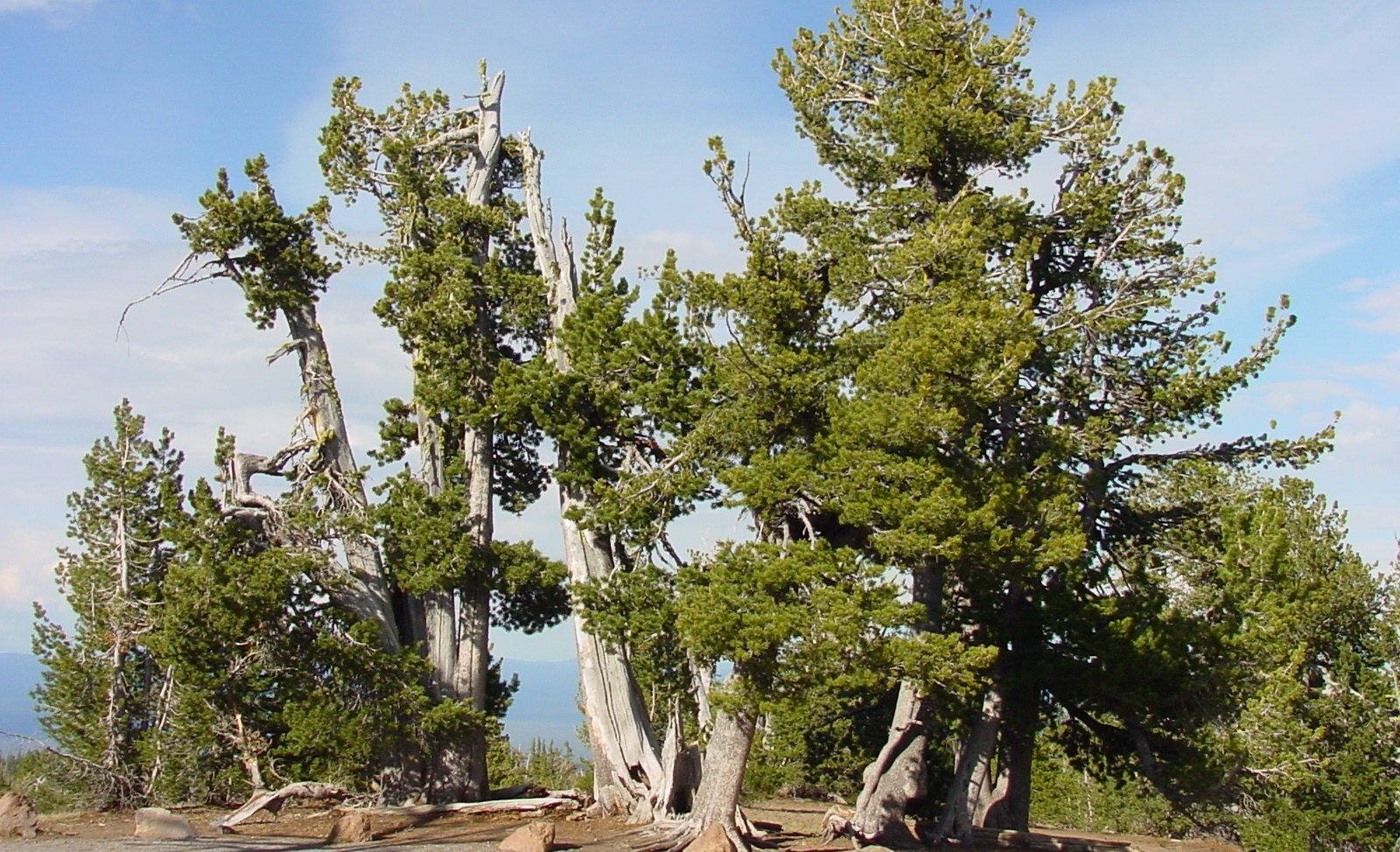Whitebark Pine (Pinus albicaulis) is a keystone species with an important role in the subalpine ecosystem reducing soil erosion, facilitating plant succession, capturing and retaining snow thereby increasing duration and quantity of summer run-off and providing an important food source for wildlife such as the grizzly and black bears (Ursus arctos and Ursus americanus), red squirrels (Tamaisciurus hudsonicus) and the Clark’s nutcracker (Nucifraga columbiana). The whitebark pine has coevolved with the Clark’s nutcracker depending on the nutcracker exclusively to disperse its seeds.
White pine blister rust (Cronartium ribicola) is a serious disease affecting whitebark pine throughout its range in British Columbia. The fungus also infects members of the Ribes genus (currant and gooseberry family) and spores are released from the leaves of those plants in the spring and land on the needles of the pine trees. The fungus travels from the needles to the branch and trunk of the tree and can eventually kill the tree. Rodents such as squirrels and porcupines also consume the sweet orange fruiting body of the fungus. This consumption of the fungus and bark of the tree can either accelerate the death of the tree or destroy the fungus and prolong the survival of the tree.
Large outbreaks of Mountain Pine Beetle (Dendroctonus ponderosae) can also infest whitebark pine stands, threatening the population. The beetle’s larvae mine the phloem area beneath the bark, eventually cutting off the tree’s supply of nutrients. Whitebark pine is particularly vulnerable to this infestation when already infected with White Pine Blister Rust (Cronartium ribicola). The loss of essential whitebark pine habitat due to mountain pine beetle infestation results in a loss of the ecosystem services it provides, with severe consequences for a diversity of wildlife. There have been previous infestations in the South Chilcotin Mountain Forests.
Other factors that threaten whitebark pine include climate change which is expected to result in a sift in suitable habitat and influence disease and pest occurrent, fire suppression which has also led to increased competition from other, more shade tolerant species and harvesting of whitebark pine, which is also a factor in their decline at lower elevations.
In order to conserve whitebark pine it is necessary to monitor the health of populations, screening for blister rust and collect, propagate and plant seeds to aid regeneration of trees. Blister rust screening involves exposing seedlings to blister rust spores and monitoring them for infection. The seedlings are grown from seeds harvested from trees thought to exhibit resistance to blister rust. Cones are collected from the tree once they are mature. A cage is placed around the cones to prevent consumption by wildlife before they can reach maturity and be collected. Seed production areas and seed orchards have also been established. Whitebark pine is a slow growing species that does not reach reproductive capacity until it is around 40 years old. Therefore it is important to act fast to ensure rust resistant individuals are propagated and planted.
We have been involved with research on whitebark pine in the South Chilcotin Provincial Park. In 2013, a student and intern for WSF from Aarhus University in Denmark completed a thesis on the influence of climate on Mountain Pine Beetle outbreaks in whitebark pine stands in the South Chilcotin Mountains.
We have also been involved with assisting whitebark pine specialist, Randy Moody and his team with data collection; including guiding to known whitebark stands, the fitting of cages to allow cones to reach maturity prior to collection and transect data collection to monitor the health of the trees. Cones collected by WSF have been delivered to local nursery, Split Rock Environmental in Lillooet for propagation and blister rust screening. In the future, we also hope to collect some data on wildlife that feed on the whitebark cones using camera traps.

